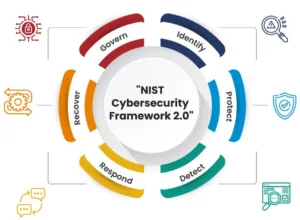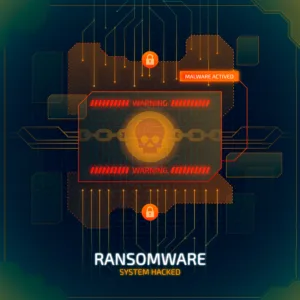
Table of Contents
Introduction
In the vast ocean of cybersecurity, organizations face an array of challenges, from defending against sophisticated cyber threats to ensuring compliance with regulatory requirements. Among these challenges, exposure management emerges as a crucial aspect in safeguarding digital assets and mitigating risks effectively.
In this blog post, we embark on a journey to explore exposure management in cybersecurity, its significance, and its differentiation from attack surface management.
Understanding Exposure Management
Exposure management can be defined as the process of identifying, assessing, and mitigating vulnerabilities and weaknesses within an organization’s digital infrastructure. It encompasses various practices, including vulnerability scanning, patch management, configuration auditing, and risk assessment.
The primary goal of exposure management is to minimize the organization’s attack surface, thereby reducing the likelihood of successful cyberattacks.
Importance of Exposure Management
In today’s interconnected world, where cyber threats are constantly evolving, exposure management plays a critical role in maintaining the resilience of organizations’ digital ecosystems. By proactively identifying and addressing vulnerabilities, organizations can significantly improve their security posture and minimize the risk of data breaches, financial losses, and reputational damage.
Differentiation from Attack Surface Management
While exposure management and attack surface management share common objectives, they focus on different aspects of cybersecurity risk management. Attack surface management primarily revolves around understanding and analyzing the various entry points or vectors that adversaries can exploit to infiltrate an organization’s network or systems. It involves mapping out the organization’s digital footprint, including assets, applications, and services exposed to potential threats.
On the other hand, exposure management delves deeper into the vulnerabilities and weaknesses present within the identified attack surface. It involves conducting comprehensive vulnerability assessments, prioritizing remediation efforts based on risk severity, and implementing appropriate controls to mitigate the identified risks effectively. In essence, exposure management serves as a proactive strategy to fortify the organization’s defenses and reduce its susceptibility to cyber threats.
Key Components
Effective exposure management encompasses several key components, each essential in mitigating cyber risks and enhancing security resilience:
1. Vulnerability Scanning:
Utilizing automated tools and techniques to identify vulnerabilities across the organization’s network, systems, and applications. Regular vulnerability scanning helps organizations stay abreast of emerging threats and vulnerabilities, allowing them to take timely remedial actions.
2. Patch Management:
Implementing a systematic process for deploying security patches and updates to address known vulnerabilities promptly. Patch management involves assessing the impact of patches, testing compatibility with existing systems, and ensuring timely deployment without disrupting critical business operations.
3. Configuration Auditing:
Reviewing and validating the configuration settings of network devices, servers, and applications to identify misconfigurations and security gaps. Configuration auditing helps eliminate unnecessary exposure points and strengthens the overall security posture of the organization.
4. Risk Assessment:
Conducting comprehensive risk assessments to evaluate the potential impact and likelihood of exploitation for identified vulnerabilities. Risk assessments enable organizations to prioritize remediation efforts based on the criticality of assets and the severity of risks.
5. Remediation Planning:
Developing and implementing effective remediation strategies to address identified vulnerabilities and weaknesses. Remediation planning involves prioritizing remediation efforts, allocating resources efficiently, and monitoring progress to ensure timely resolution.
Best Practices
To achieve success and bolster cybersecurity defenses, organizations should adopt the following best practices:
1. Establish Clear Policies and Procedures:
Define and document clear policies and procedures for vulnerability management, patch management, and configuration auditing. Ensure that stakeholders understand their roles and responsibilities in the exposure management process.
2. Deploy Automated Tools and Technologies:
Leverage advanced automated tools and technologies to streamline vulnerability scanning, patch deployment, and configuration auditing processes. Automation helps organizations improve efficiency, accuracy, and scalability in exposure management efforts.
3. Implement Continuous Monitoring:
Implement continuous monitoring mechanisms to detect and respond to emerging threats and vulnerabilities in real-time. Continuous monitoring allows organizations to proactively identify and mitigate security risks before they escalate into full-blown cyber incidents.
4. Foster Collaboration and Communication:
Foster collaboration and communication among cross-functional teams, including IT, security, and business units. Encourage open dialogue and knowledge sharing to enhance collective awareness and response capabilities against cyber threats.
5. Stay Abreast of Emerging Threats:
Stay informed about the latest cybersecurity trends, threats, and vulnerabilities through threat intelligence feeds, industry reports, and information sharing platforms. Proactively adapt exposure management strategies to address evolving cyber risks effectively.
Conclusion
In conclusion, exposure management serves as a cornerstone in the defense-in-depth strategy of modern organizations, helping them mitigate cyber risks and protect critical assets from potential threats. By proactively identifying and addressing vulnerabilities within their digital infrastructure, organizations can bolster their security resilience and minimize the impact of cyber incidents.
While exposure management shares common objectives with attack surface management, it focuses specifically on mitigating vulnerabilities and weaknesses, thereby reducing the organization’s susceptibility to cyber threats.
By embracing best practices and leveraging advanced technologies, organizations can strengthen their exposure management capabilities and navigate the complex cybersecurity landscape with confidence.
FAQ‘s
1. What is exposure management in cybersecurity?
Exposure management refers to the process of identifying, assessing, and mitigating vulnerabilities and weaknesses within an organization’s digital infrastructure. It involves practices such as vulnerability scanning, patch management, and risk assessment to minimize the organization’s attack surface and mitigate cyber risks effectively.
2. Why is exposure management important for organizations?
Exposure management is essential for organizations to enhance their security resilience and minimize the risk of cyber threats. By proactively identifying and addressing vulnerabilities, organizations can reduce the likelihood of successful cyberattacks, data breaches, financial losses, and reputational damage.
3. How does exposure management differ from attack surface management?
While both exposure management and attack surface management focus on mitigating cyber risks, they target different aspects of cybersecurity risk management. Attack surface management primarily involves understanding and analyzing the various entry points or vectors that adversaries can exploit to infiltrate an organization’s network or systems. On the other hand, exposure management delves deeper into identifying and mitigating vulnerabilities and weaknesses present within the identified attack surface.
4. What are the key components of exposure management?
The key components of exposure management include vulnerability scanning, patch management, configuration auditing, risk assessment, and remediation planning. These components collectively help organizations identify, prioritize, and address vulnerabilities within their digital infrastructure to strengthen their security posture.
5. What are the best practices for effective exposure management?
Effective exposure management relies on implementing best practices such as establishing clear policies and procedures, deploying automated tools and technologies, implementing continuous monitoring mechanisms, fostering collaboration and communication among cross-functional teams, and staying abreast of emerging threats through threat intelligence feeds and information sharing platforms.
6. How often should vulnerability scanning be conducted?
Vulnerability scanning should be conducted regularly, ideally on a scheduled basis, to ensure timely identification of vulnerabilities and weaknesses within the organization’s digital infrastructure. The frequency of vulnerability scanning may vary depending on factors such as the size of the organization, the complexity of its IT environment, and the level of cyber risk exposure.
7. What is the role of risk assessment in exposure management?
Risk assessment plays a crucial role in exposure management by evaluating the potential impact and likelihood of exploitation for identified vulnerabilities. Risk assessments enable organizations to prioritize remediation efforts based on the criticality of assets and the severity of risks, thereby optimizing resource allocation and enhancing cybersecurity resilience.
8. How can organizations ensure effective remediation of identified vulnerabilities?
Organizations can ensure effective remediation of identified vulnerabilities by developing and implementing comprehensive remediation plans that prioritize remediation efforts based on risk severity, allocate resources efficiently, and establish clear timelines for resolution. Continuous monitoring and validation of remediation efforts are also essential to ensure that vulnerabilities are effectively mitigated.
Read more on https://cybertechworld.co.in for insightful cybersecurity related content.




















I don’t think the title of your article matches the content lol. Just kidding, mainly because I had some doubts after reading the article.
Thanks for sharing. I read many of your blog posts, cool, your blog is very good.
Thanks a bunch for sharing this with all of us you actually know what you’re talking about! Bookmarked. Please also visit my website =). We could have a link exchange arrangement between us!
I was just looking for this information for some time. After 6 hours of continuous Googleing, at last I got it in your web site. I wonder what’s the lack of Google strategy that do not rank this kind of informative sites in top of the list. Generally the top web sites are full of garbage.
Thanks for another fantastic article. Where else may anybody get that type of information in such a perfect way of writing? I’ve a presentation subsequent week, and I am at the search for such info.